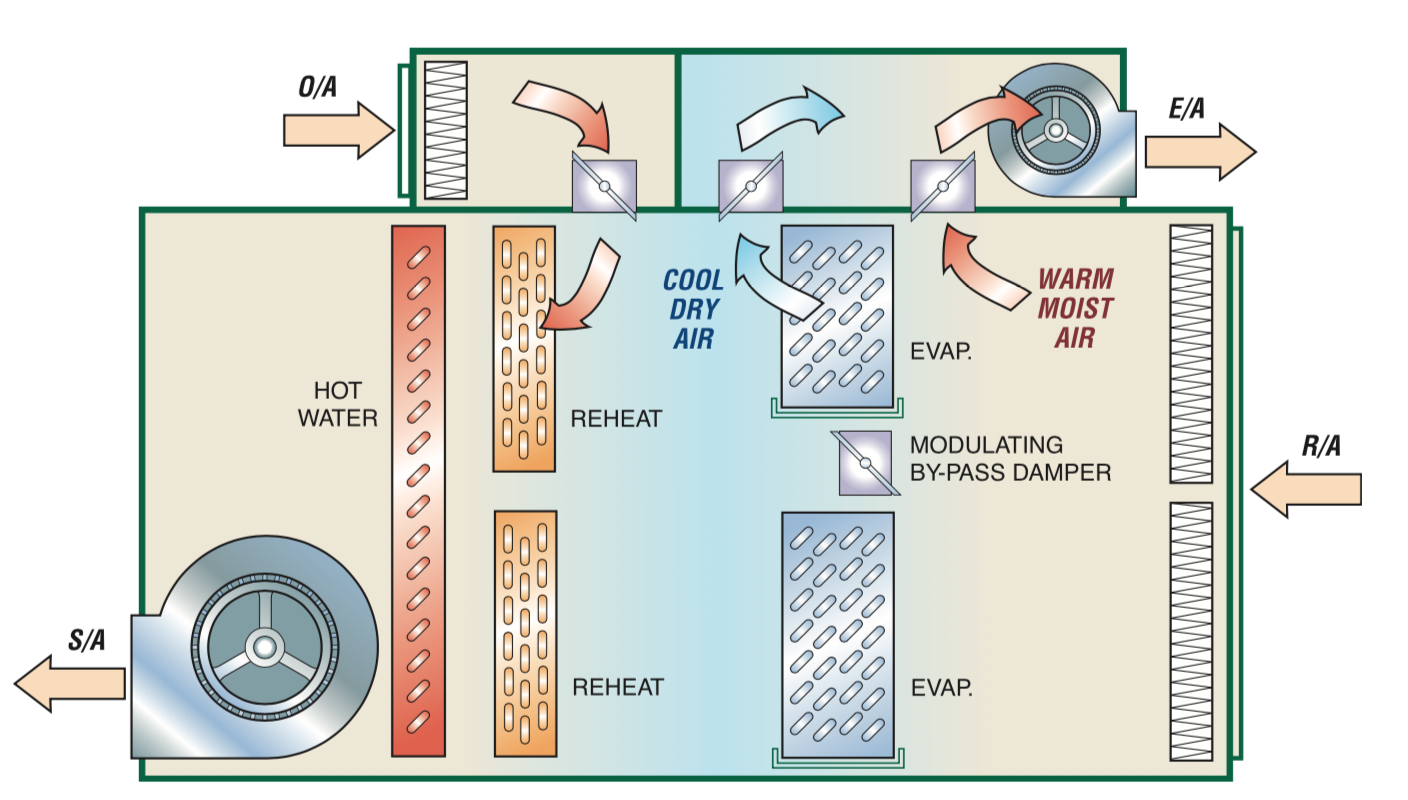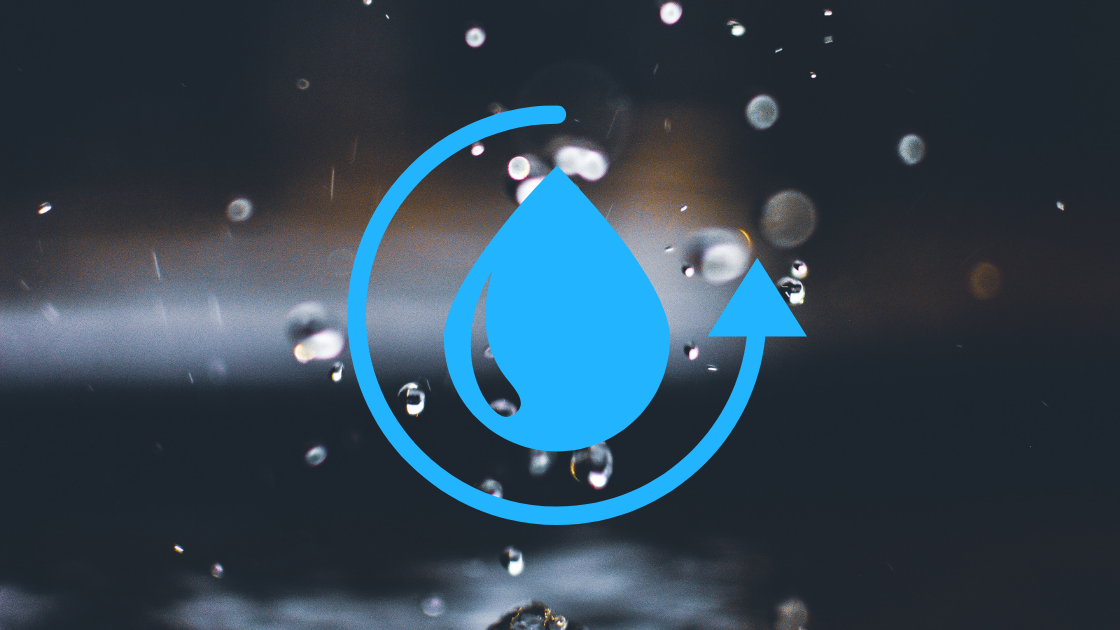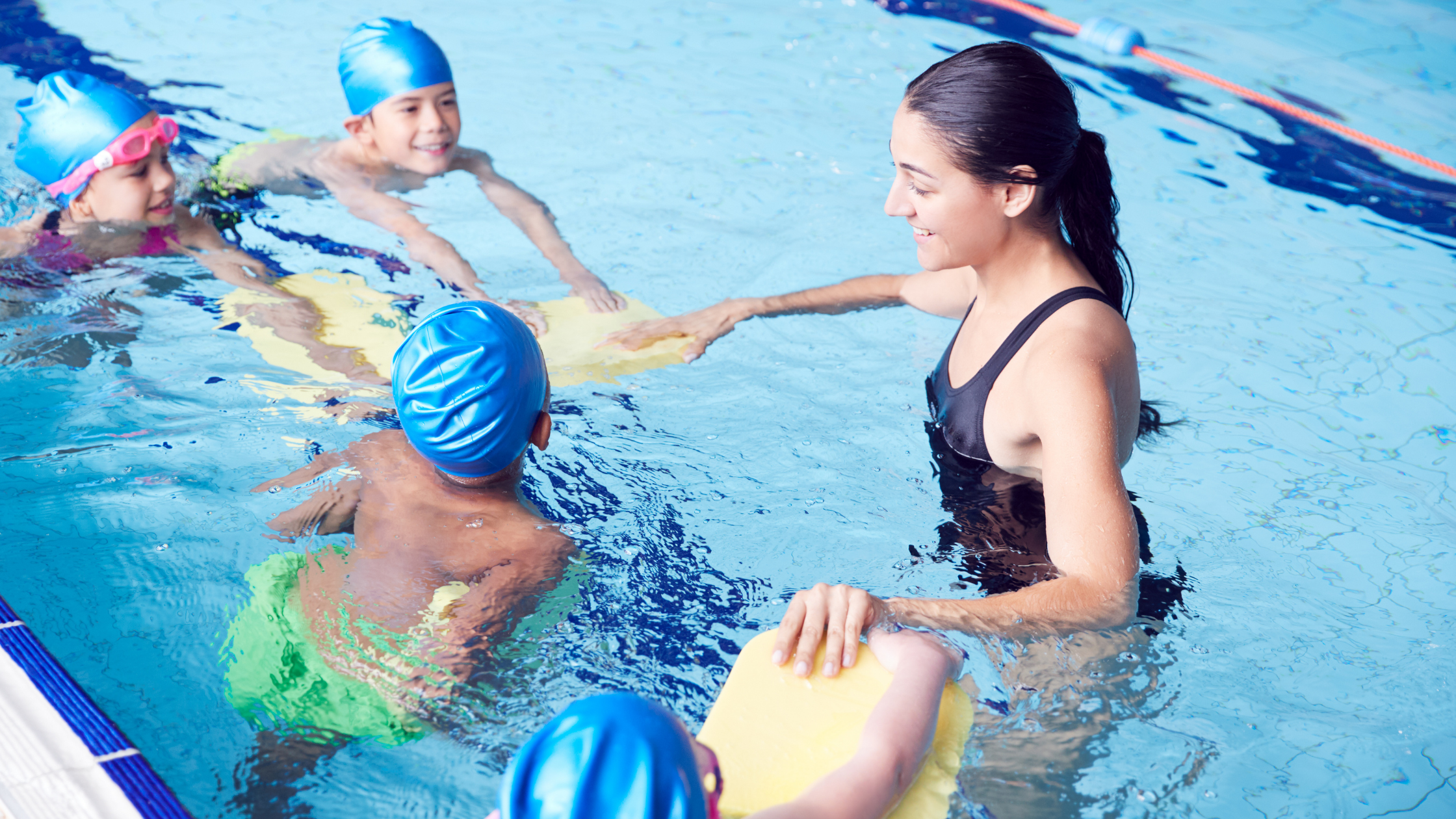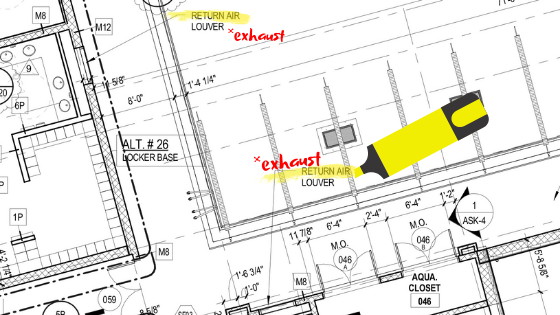Pool Dehumidifiers vs. Air Conditioners
Pool Dehumidifiers and air conditioners are not equal. Indoor swimming pools have variables and climate demands unlike any other type of commercial building or space. In particular, air conditioners are unfit for the moisture removal rates and energy efficiency needed to manage a natatorium.
What are the differences between air conditioners and dehumidifiers?
The big difference between air conditioners and dehumidifiers is that air conditioners are designed to cool the air, and a byproduct of that cooling is dehumidification. Pool dehumidifiers, however, are designed to remove moisture from the air (dehumidify), and the byproduct of that process is the cooling of air. And beyond that, a dehumidifier is trying to maintain a specific relative humidity and temperature too, so it does not always want to cool the air...but it always has to remove moisture.
In most commercial and residential rooms, the priority is simply to cool the air and control the temperature, which is why homes, schools and offices normally have air conditioners installed. Indoor swimming pools, however, are not even remotely close to a typical room. The primary goal in a natatorium is to remove moisture. Therefore, a pool dehumidification unit (PDU) is the clear choice for natatorium HVAC.
Related: Pool Air Quality Resources
Installing anything short of a properly-sized indoor pool dehumidifier is a costly mistake in the long run. Don't let anyone convince you that air conditioners are able to handle an indoor swimming pool...because that is not what they are designed for. And normally, the only reason AC units are put on swimming pools is for short-term cost savings during the VE process.
Energy Recovery
There are other benefits associated with using a PDU over an air conditioner when designing a natatorium's HVAC system. The most important benefits relate to energy efficiency and cost savings. Let's start with the airflow itself.
Reheat Coils
PDUs have reheat coils. These coils allow the system to recapture the energy (heat) that was removed when the air passed over the evaporator coil. This recaptured heat can be put back into the natatorium as heat, or even into the swimming pool's circulation system to help heat the pool itself. Why throw that valuable energy away? A PDU will reclaim it and use it for energy efficiency.
Illustration Courtesy of Desert Aire
Reheat coils not only put back the sensible energy that was removed from the air by the evaporator coil, but it also converts latent energy into sensible energy, so it can be added to the natatorium in times where heat is needed.
Since natatoriums are typically maintained with an indoor air temperature between 82º - 86ºF (27.7º - 30ºC), there can be a large heating load required over the course of a year. Think about winter. How much energy do you think it would take to heat an indoor swimming pool when it's 20ºF outside? Consider that frigid outside air needs to be heated up at least 82ºF. That 62º temperature differential (also called "Delta T" or "∆T") is massive!
So rather than just pouring in energy from a gas furnace or electrical heating coils, a PDU can reclaim heat to help out. A dehumidifier manufacturer could give you specifics on how efficient this can be.
Designed specifically for indoor swimming pools
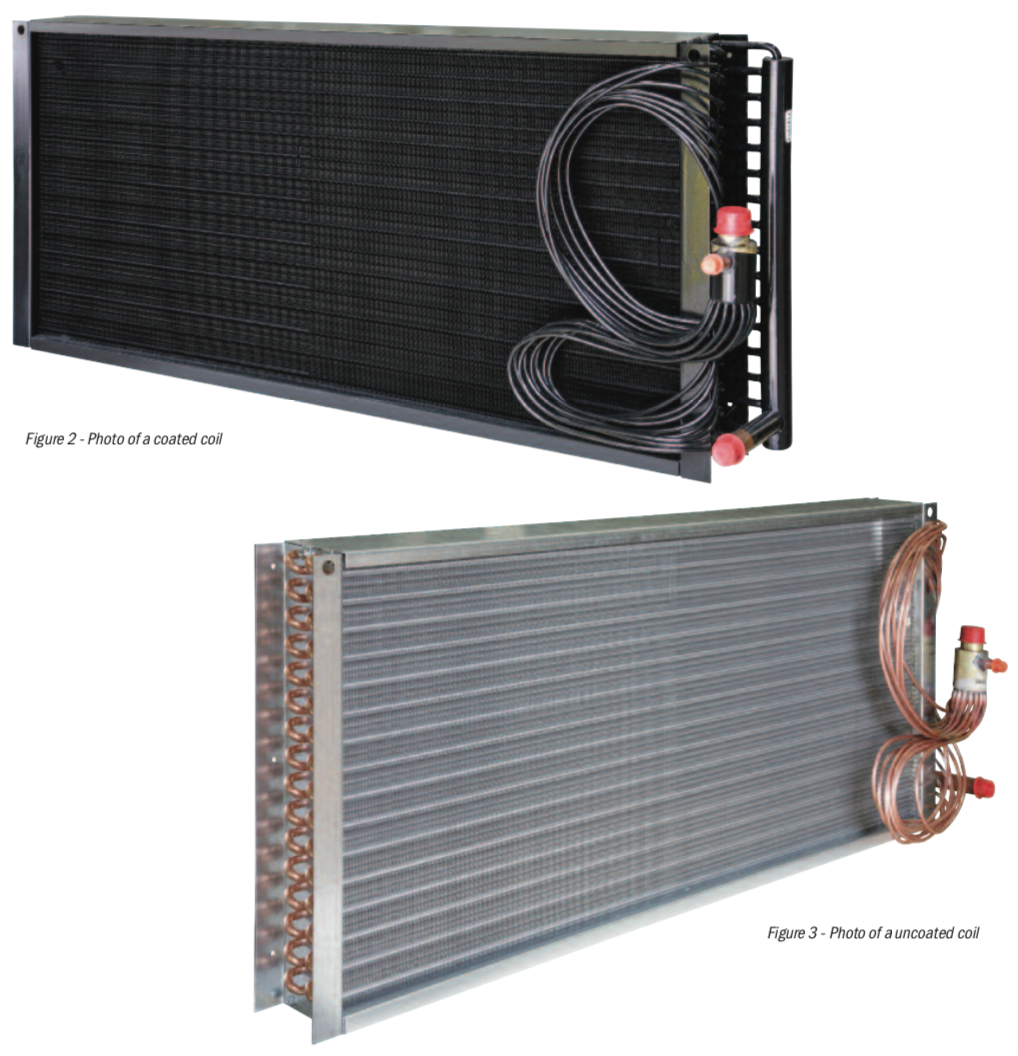 We'll cover one more reason air conditioners are not designed for indoor swimming pools. We have already established that air conditioners are designed to cool air, whereas a PDU is designed to remove moisture. Moisture removal for a constantly-evaporating body of water is far more important than just cooling air. Secondly, air conditioners do not have reheat or preheat coils, and therefore cannot be compared to a PDU when it comes to energy recovery and efficiency.
We'll cover one more reason air conditioners are not designed for indoor swimming pools. We have already established that air conditioners are designed to cool air, whereas a PDU is designed to remove moisture. Moisture removal for a constantly-evaporating body of water is far more important than just cooling air. Secondly, air conditioners do not have reheat or preheat coils, and therefore cannot be compared to a PDU when it comes to energy recovery and efficiency.
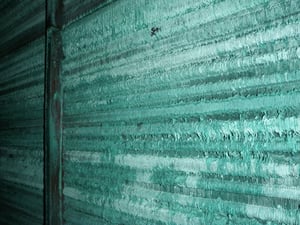
Finally, air conditioners are not physically designed for an indoor swimming pool. PDUs are made specifically for constantly humid and even caustic conditions. Until the introduction of source-capture exhaust, these PDUs had been getting destroyed by chloramines, so manufacturers continued to make them more robust. Epoxy coatings, more durable materials, and the assumption that every component inside is subject to corrosion. So a PDU is a strong piece of equipment built to withstand that beating.
That being said, even with those coatings, PDUs get rusted out and destroyed over time anyway...but they last far longer than an air conditioner would. We have seen enough natatoriums with air conditioners to know the difference. It's not pretty, and it can be very costly to a pool owner.
Occupied and unoccupied modes
Pool dehumidifiers can also be ramped up or down, depending on the needs of the facility. For normal operation they could be operating at a certain amount of exhaust and replacement outside air (OA). That amount of air exchange could increase during swim practice or meets (event mode, or purge mode), and could decrease when nobody is in the pool overnight (unoccupied mode). An indoor pool cover that prevents evaporation can also substantially reduce the amount of moisture the PDU needs to handle, so that could be an even lower setting than normal unoccupied mode. It just depends on your facility.
Conclusion
When building or renovating an indoor swimming pool, the choice is clear. So clear, in fact, that it should not even be a comparable choice. Air conditioners are not made for swimming pools, and therefore should not be used in swimming pools. Use a properly-sized pool dehumidifier, and nothing less.

 By
By
